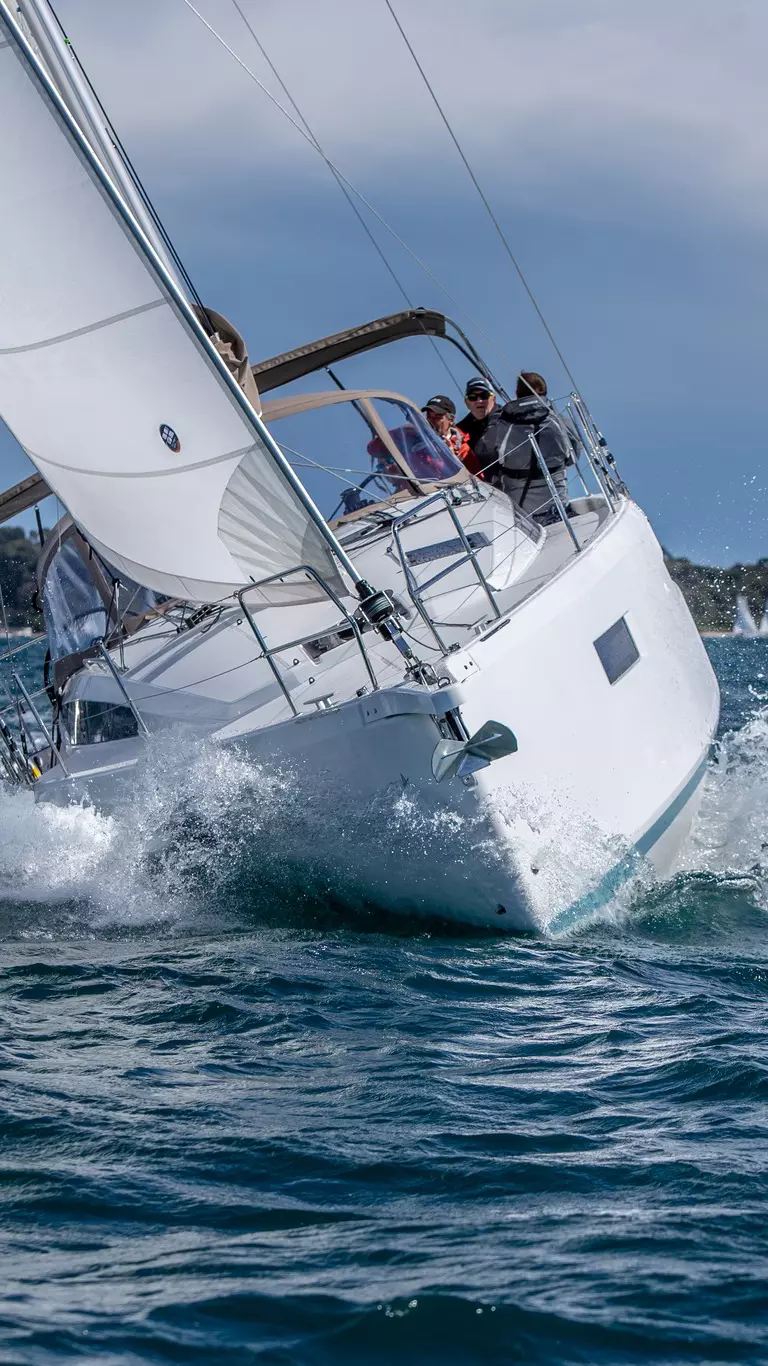ACU-150 & ACU-400 product recall
Find out more
Hardware and software refinements are making sailors safer, better informed, and more confident in their decisions than ever, writes Greg Wells, UK Sales Account Manager, Raymarine
Monday - 16 August 2021
Spontaneity is a valuable asset in certain contexts: no one could deny the importance of being able to think and react quickly. Nevertheless, it is imperative to have as much information as possible at your disposal before you can make truly informed decisions. When you are on the water, leaving any elements to chance is bound to have consequences, which can range from mildly inconvenient to unthinkably severe.
Technology has done so much to aid sailors’ situational awareness, making sailing not only safer but considerably more enjoyable in the process. Raymarine is committed to continue evolving this technology, providing sailors with new enhancements to its wireless and wired products, clearly presenting them with all the data they require.
Accessing polars
On top of basic information such as compass heading, depth and boat speed, the ability to readily access GPS, wind data and detailed, up-to-date cartography – in addition to more advanced data such as AIS, radar, weather routing and laylines – is as desirable for knowledgeable decision-making on recreational sailing yachts as it is for the skippers at the helm of racing boats. Polar information which was once the domain of offshore racers is now available, and beneficial, to all sailors. Anyone whose boat is equipped with one or more of Raymarine’s next-generation Axiom chartplotters, with its LightHouse operating system, can call up this data and make use of it.
Polars are calculations which a designer, manufacturer or sailmaker can supply to denote the speed potential of a particular boat in different wind angles and strengths. Knowing your boat’s optimal performance parameters will enable you to identify the quickest route between two points by leveraging your target speeds and wind angles, from which you can also derive your laylines. The Velocity Made Good (VMG) principle demonstrates that travelling in a straight line often is not the most rapid solution, and recreational sailors may wish to use their boat’s performance to its best advantage if, for example, they need to speed up to reach a port in time to get a mooring or berth. The live layline display on LightHouse enables sailors to maximise their VMG, displaying how far they need to sail on their current tack to reach their target waypoint after tacking, taking in to account wind conditions.
More than 300 sets of polar information are currently hosted within the Raymarine Lighthouse OS, and this figure rises with each periodic update because we also enable sailors to submit their own polars via our website for integration in future releases. The Raymarine Lighthouse OS system also accommodates a ‘Fixed Angles’ solution for sailors who either can’t find polars for their boat or who are unhappy for any reason with the supplied polars. Entering the wind angles, they feel work best for their boat into the system will enable the software to calculate target speeds and angles. Sailors have the option of also adding in the effects of current and their boat’s leeway to assist in working out the laylines to which they should be sailing.
Home screen
The home screen on the Raymarine multifunction display gives sailors all this data from a single source. Being able to compare their speed through the water to their target speed, for example, will enable them to tell at a glance if their boat’s performance is deficient for some reason, such as incorrectly trimmed sails. The boat’s polar performance is shown as a percentage.
Other features to assist decision-making and improve sail-handling include coloured segments on the dial in the centre of the display, generated by polar information, which depict the boat’s port, starboard and downwind wind angle targets along with the apparent wind speed/angle, true wind speed/angle and historical wind angle. Notches within the coloured segments indicate whether the boat is achieving its ideal performance in the given wind strength.
The same screen also includes a tidal arrow, indicating the direction of current flow, and a COG (Course Over Ground) arrow, as well as estimated time of arrival. These features are all editable, so if sailors want to adjust or remove anything on the screen, pressing and holding their finger on the relevant cell will bring out a pop-up menu, allowing them to change any items around.
Collision Avoidance
The integration of ClearCruise augmented reality system within Axiom is highly conducive to making better-informed navigation decisions and improving collision avoidance. By combining the AR200 Augmented Reality Stabilization Module with either a CAM210 or CAM220 high-definition camera The ClearCruise functionality overlays important navigation features on the screen in HD video. Color-coded labeling provides instant identification of significant chart objects, marks, waypoints, and AIS-equipped vessels, increasing responsiveness to marine traffic and clarifying otherwise complex or confusing navigation scenarios.
Responsiveness
Launched last year, the award-winning Axiom+ offers 16GB of storage, which equates to more memory for third-party apps, storing waypoints and routes, and the capacity to store Raymarine LightHouse cartography.
LightHouse Charts are now available. The charts can be viewed in four separate modes – Day, Dusk, Night and Bright Sun – to lessen eye strain in varying light conditions, while users can also adjust the sizes of key chart symbols including lights, channel markers and other navigational features without having to alter the scale of the chart itself.
Importantly, the Axiom+ screens are also polarised-sunglasses-friendly and feature Raymarine HydroTough nano-coating, so the touch controls remain accurate even if the glass gets wet. The coating also repels oil and smudges. Axiom+ also integrates with NMEA2000 and SeaTalkNG, so the connectivity is there for any sailing yacht skippers who might wish to integrate anything from wind instruments to engine data devices, entertainment apps, high-pressure watermakers, marine lighting system controls, and so on.